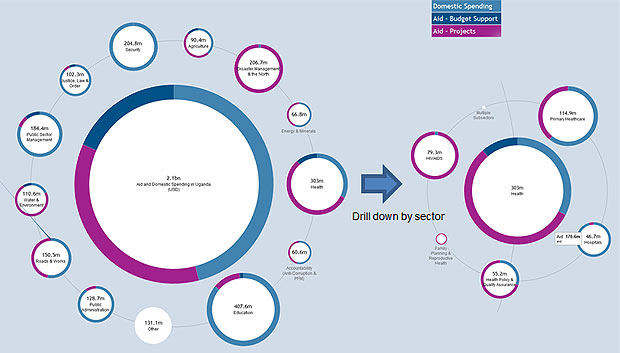One of the main reasons that the International Aid Transparency Initiative (IATI) was established was to provide better quality data for the governments of countries in which we work (known as "partner countries" in international development language). If ministers and officials in partner countries can know how development assistance is being targeted in their countries then they can better match the country's budget to the needs of their citizens.
This is better articulated in the following video.
When we published our latest monthly IATI data, we included 2 new pieces of data that are important for partner countries.
- The budget-identifier (<country-budget-items> element in IATI) classifies the activity according to a common set of budget types (for example provision of health, education or social protection. This common classification can then be used to by partner countries to map development assistance to their own budget categories.
- The economic classification (<capital-spend> element in IATI) defines how much of an activity is capital expenditure.
We have been working with partner countries, national donors in Canada and Sweden, Publish What You Fund and the International Budget Partnership to pilot this approach. This is an illustration of mapping the budget identifier to the Ugandan budget, showing domestic spending by the Ugandan government alongside development assistance.

We realise that this is an early stage, and we regard the data released in these elements as provisional (Beta stage). We are looking for feedback from anyone trying to use the data to map to individual country budgets. Further piloting and testing by partner countries will take place over the summer and autumn, overseen by the IATI Technical Advisory Group.
If all IATI publishers release their data to this common standard, it will allow development assistance to be mapped to partner country budgets and compared with domestic spending, allowing partner country governments to improve the effectiveness of both their public spending and their development assistance.
It is important to test this approach to providing data for partner countries to use, so that we can continually improve and then support other donors in providing high quality information that will revolutionise the way partner countries can manage their budgets.
Please do get in touch if you are trying to use the data.
This post was co-authored by Denise Patrick, Statistics Adviser at DFID and John Adams.
Keep in touch. Sign up for email updates from this blog, or follow John on Twitter.

Recent Comments